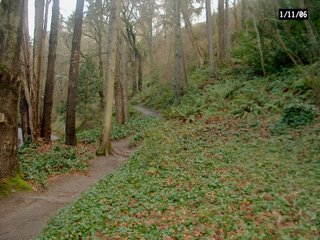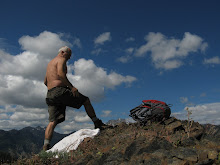
I caught a few minutes of Mel Gibson's "The Patriot" the other night. I heard mention made of a "bundling bag," but hadn't been watching enough of the movie to understand the context of the expression. I could see, however, that a young couple was on screen and that one of them did appear to be in the process of being sewn into some kind of linen bag--I think it ws the guy, but I'm not sure.
For some perverse reason, I became fascinated with the whole concept of being sewn into a bag in order to avoid intimate contact with the person with whom you were sharing a bed. Hence, I did some research.
It seems that "bundling" has quite a history, going back even before Microsoft's lawyers re-invented the expession a few years ago, much to Netscape's detriment. Evidently, in America's colonial period, young men and women would "bundle" as a form of courtship. Even in that puritanical era, if would often be a way to offer young couples some quality time at the end of the day, especially if the man had to travel a considerable distance to call on his love. Beds were at a premium back then and often had to be shared with travelers. And when you were trying to save heat and beds, it seemed that if the sparking couple was going to have any face time at all, it would have to be in the bedroom (or at least the room where the bed was). The lights would be turned off to save oil, the fire would be out to save wood and the only warm place to be was under about 11 blankets. And it was about 7 o'clock.
But of course, unmarried men and women couldn't just sleep together in the same bed. It was hardly allowed even for married couples, although I'm sure they also justified it (at least in the winter months) as a way of staying warm. But sharing a bed did come to be accepted as part of the rural colonial courtship practice so long as one or both of those involved would be sewn into some kind of bag, more or less assuring that no hanky-panky would occur. The bags were usually made of soft cloth and often were sewn tightly at the waist. Other models offered a little more security, being more like mummy sleeping bags, sewn tight above the chest. I suppose one could creatively circumvent the bag, but probably not without making a lot of racket, which would have awoken other members of the household, some of which no doubt slept with pistols under their bedpans.
There were other variations on the bundling bag, most notably the bundling board which was a plank separating the two sides of the bed. Less secure yet was a bolster or pillows. Either way, it usually beat sleeping in the barn, which was the next option. A bundling board wasn't, however, good enough for a married Sheriff up for re-election in the early 1800s. As the story goes:
The office-seeker came to a rural home late in the afternoon. He inquired whether he could obtain a meal, and lodging for the night. The reply was that he could have both. The supper was a fine one, and the candidate was in excellent humor.
As was customary in those days, folks went to bed rather early, and on announcing that he believed he would be off to bed, if they would tell him where to sleep, he'd retire.
The farmer said: "We don't have much room, but you can sleep with the hired girl."
The candidate replied that he was a married man, and a candidate, too, and that if it became generally known throughout the county that he had slept with a hired girl during his campaign, even with a bundling board between them, that some constituents might misconstrue his motives and manners: Could he have no other place to sleep? The farmer said the only other place he could think of was in the barn.
So rather than chance it to sleep with the hired girl on account of what might have happened to his campaign, he decided on the barn.
Pretending to be asleep, early the next morning he heard the hired girl come into the stable to let out the cows.
After milking one or two, she came back to release a bull which had become restless, leading him to one of the cows. The story goes that the old bull sniffed around a bit, turned his head, and walked away. This infuriated the maid, and she yelled at the bull in evident disgust: "What the devil's a-matter with you? Are you a candidate for sheriff, too?"
Have a 14-year old daughter you want fitted for a bundle bag? Well, so do I and I hear they're on sale at the Kentucky Walmarts all this week. They come in all sizes and at the Walmart price you can afford to buy enough for the whole family, even those pesky 2nd and 3rd cousins who are always stopping by. Some things just can't be improved....





